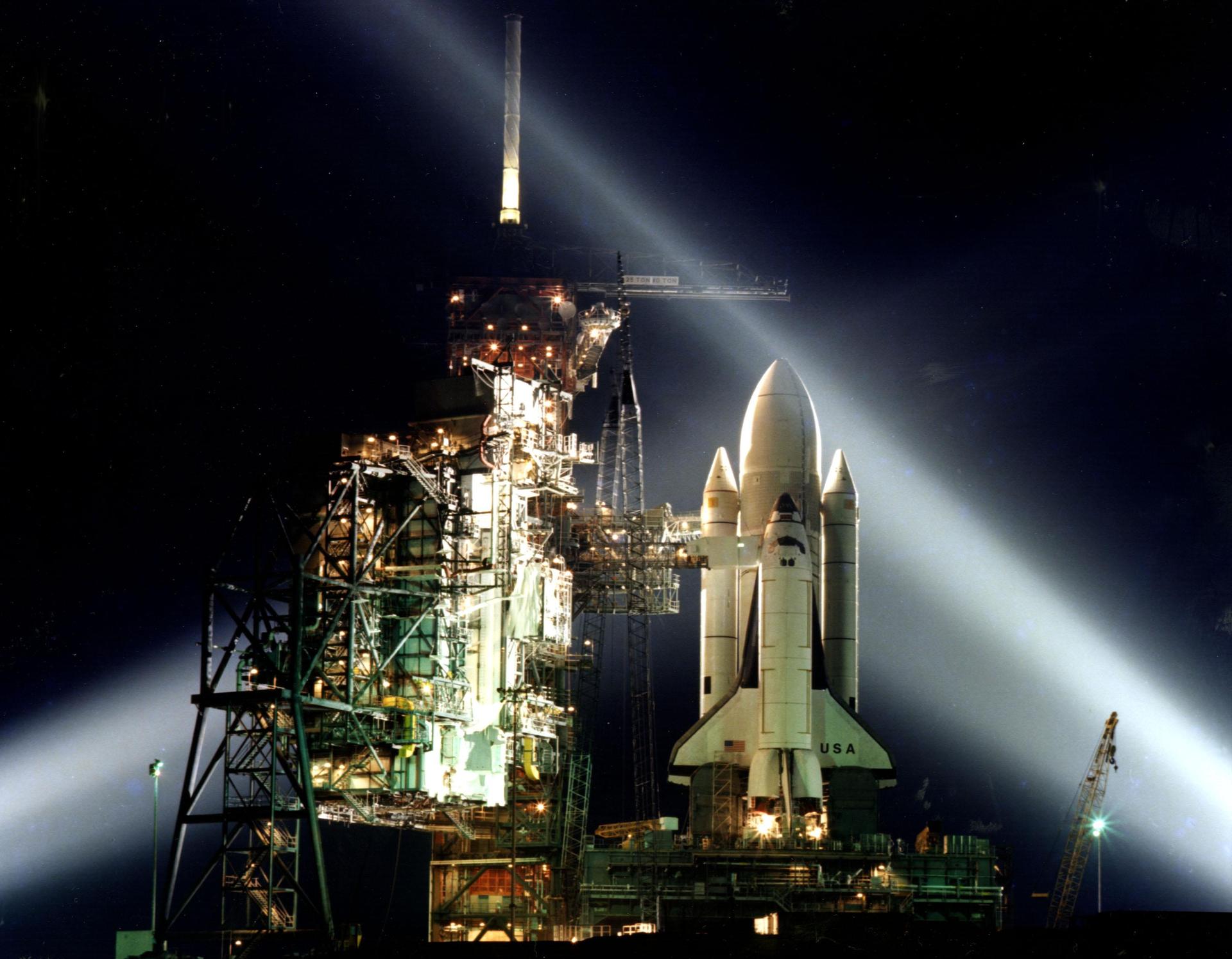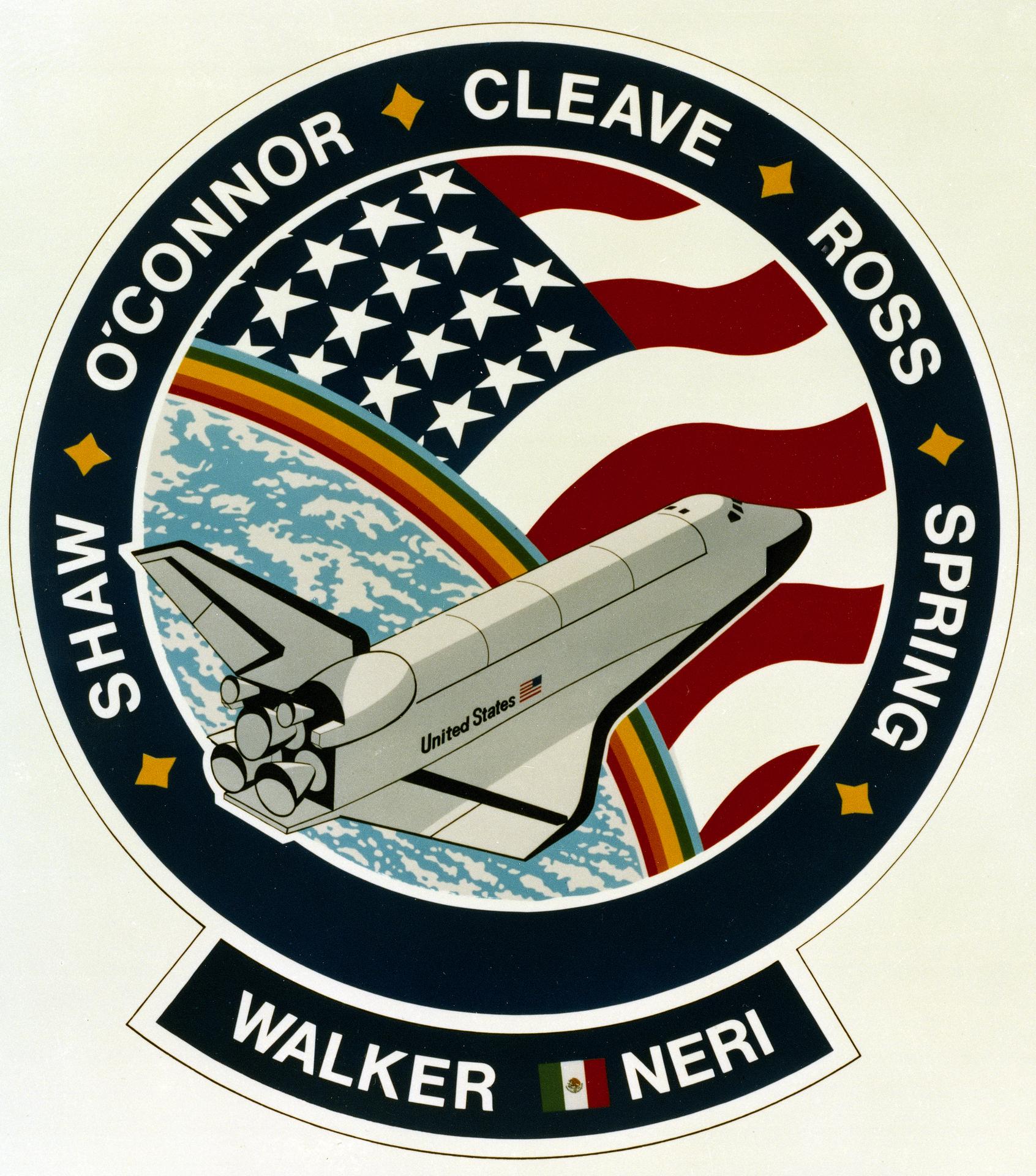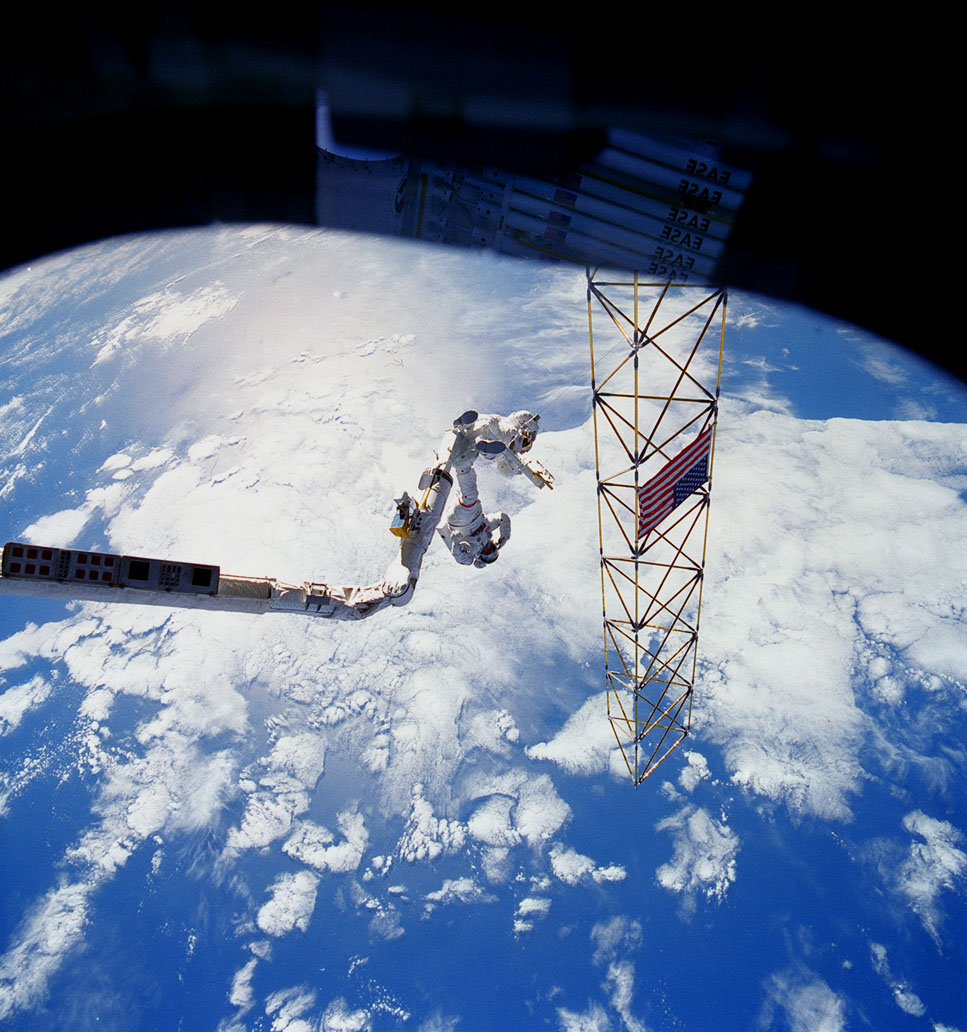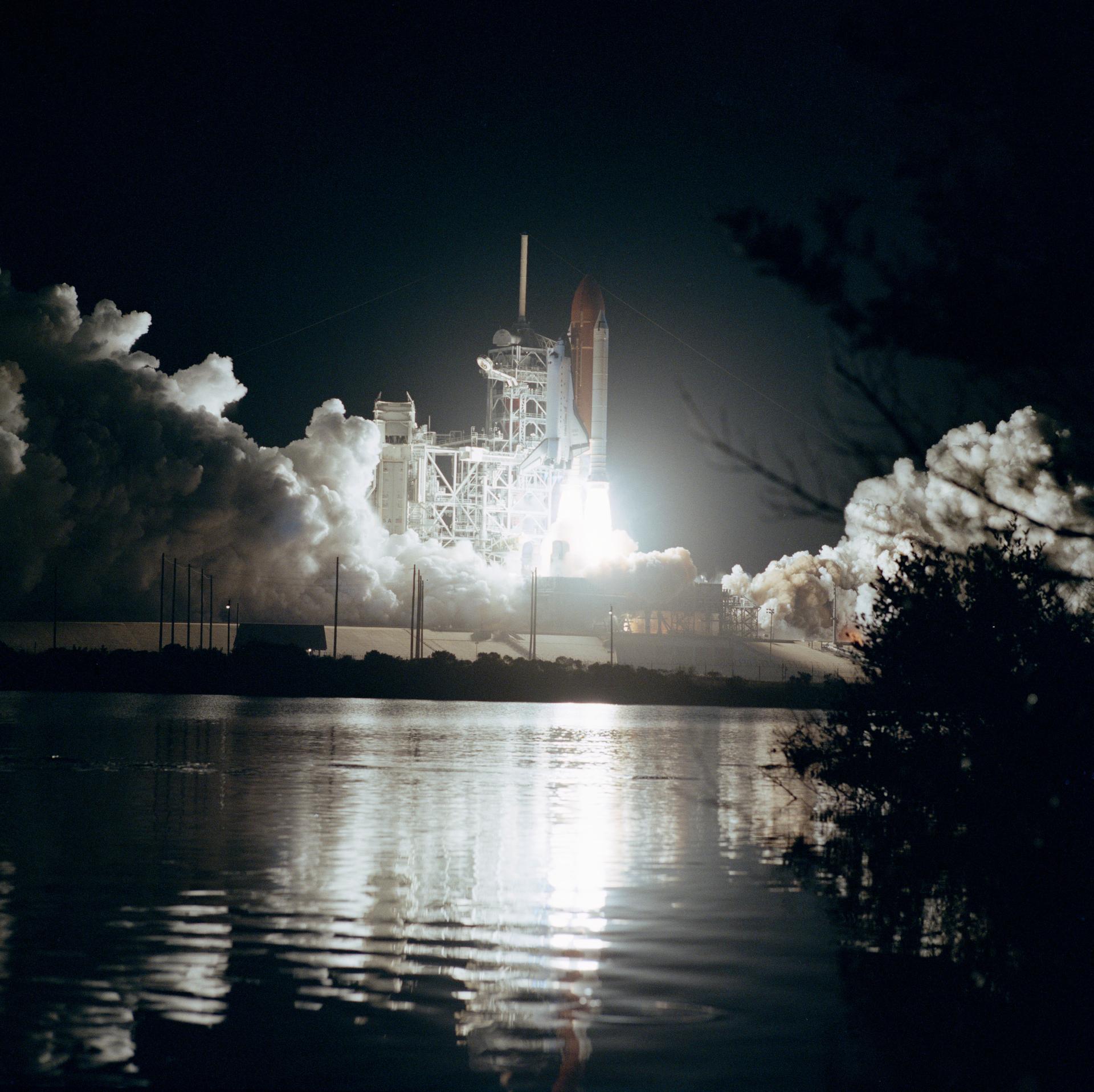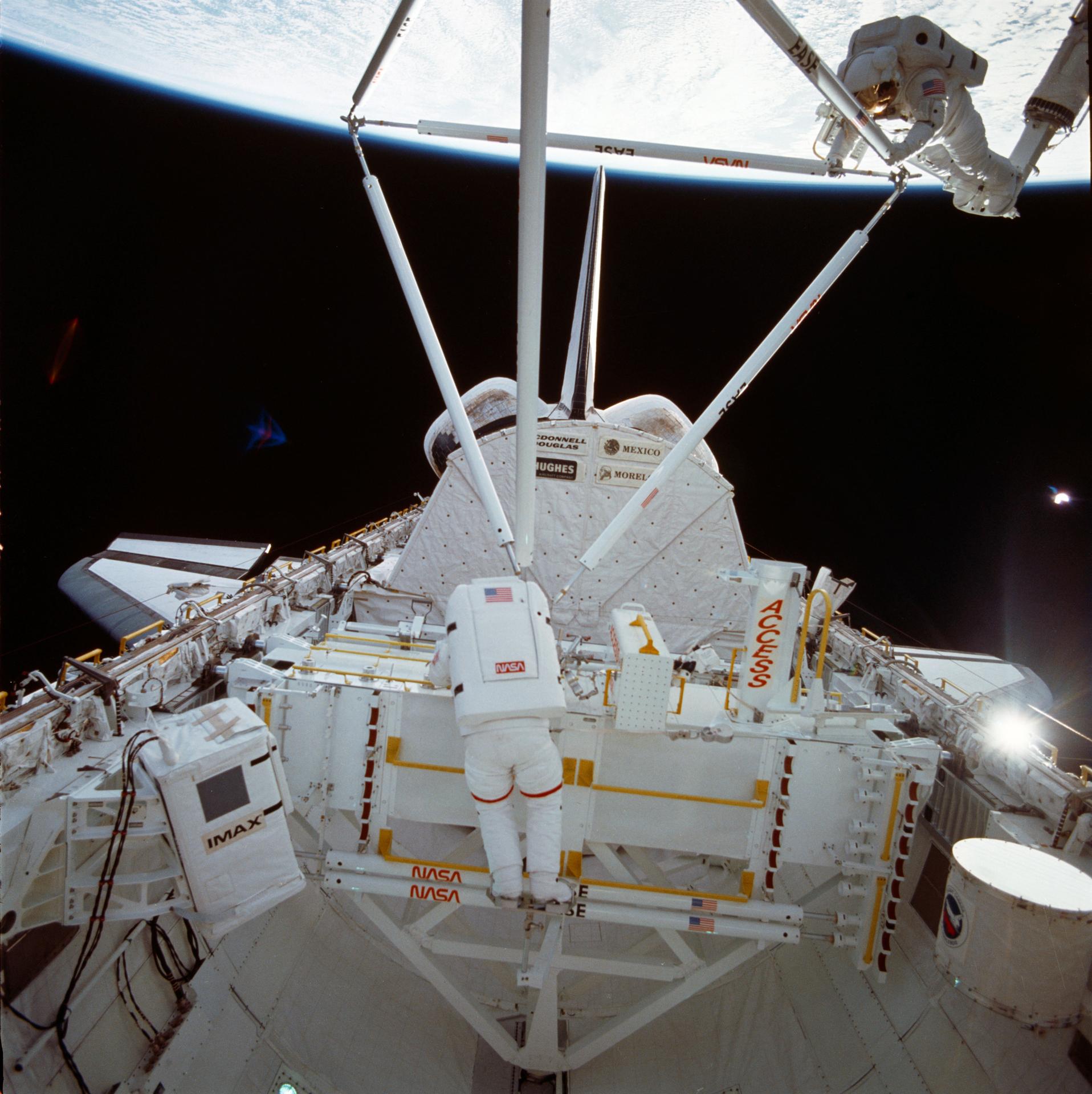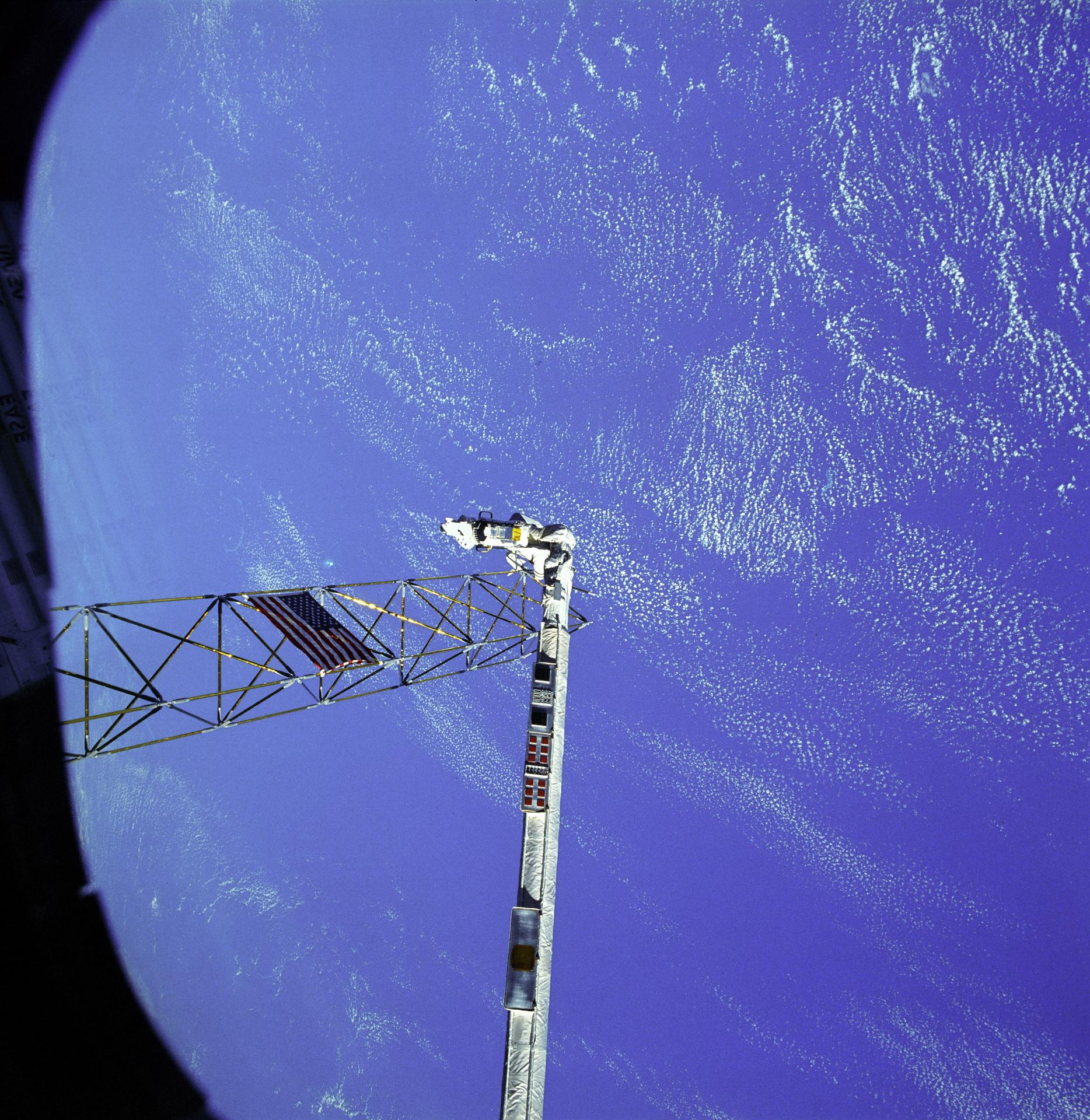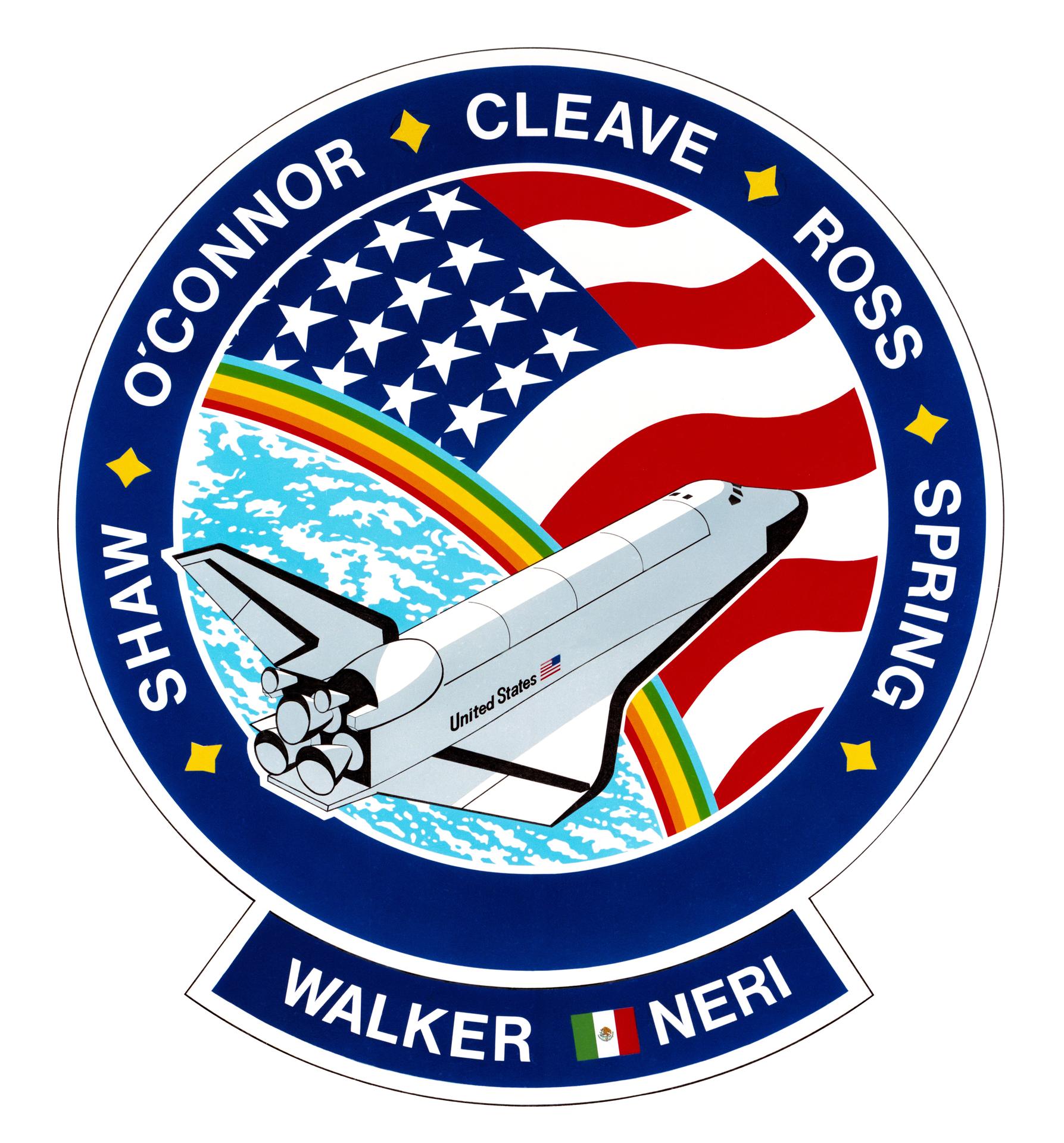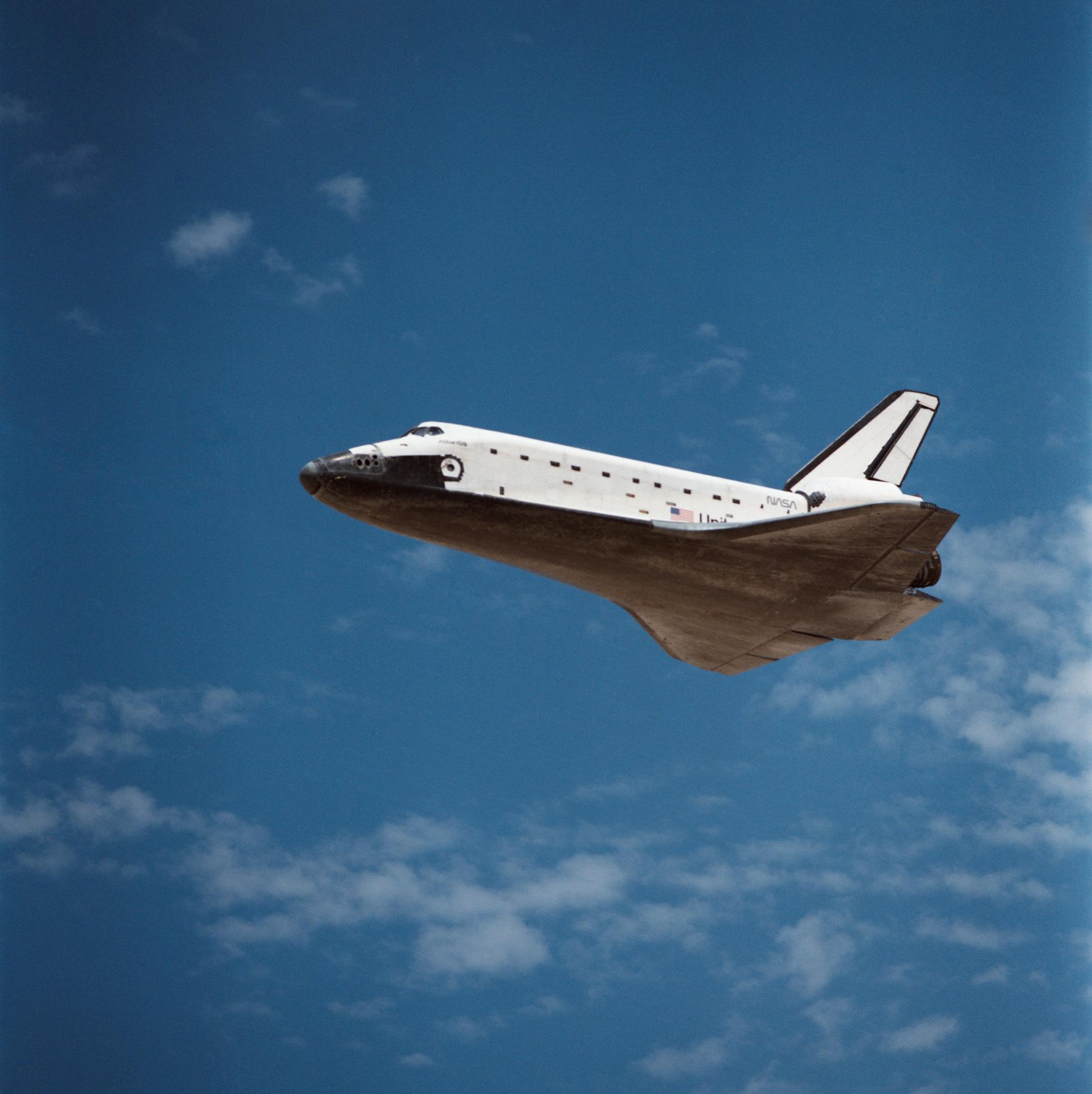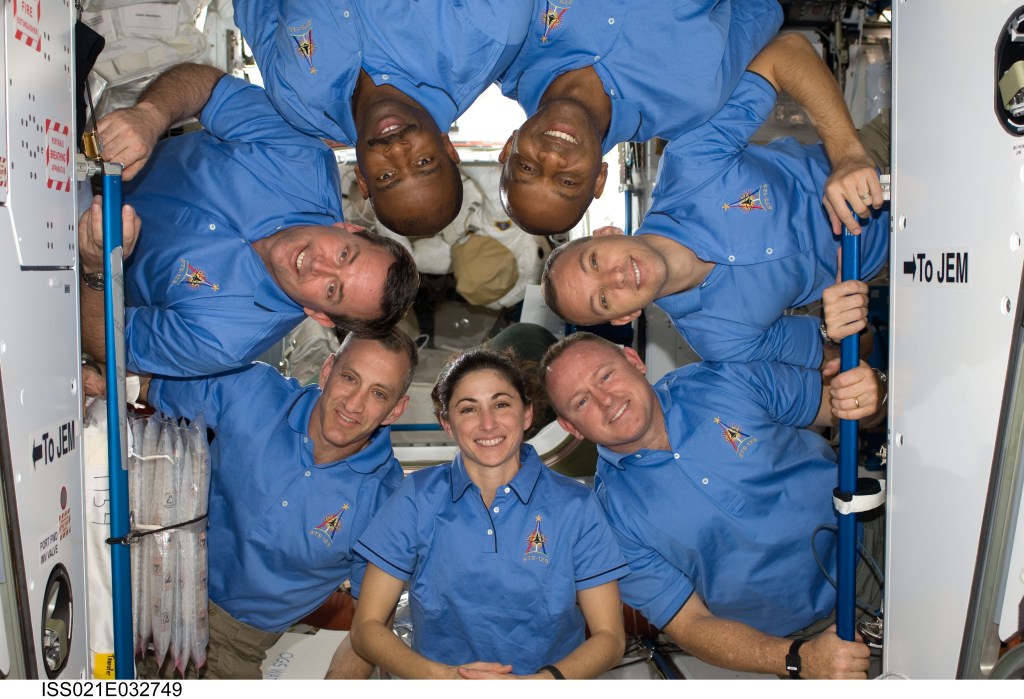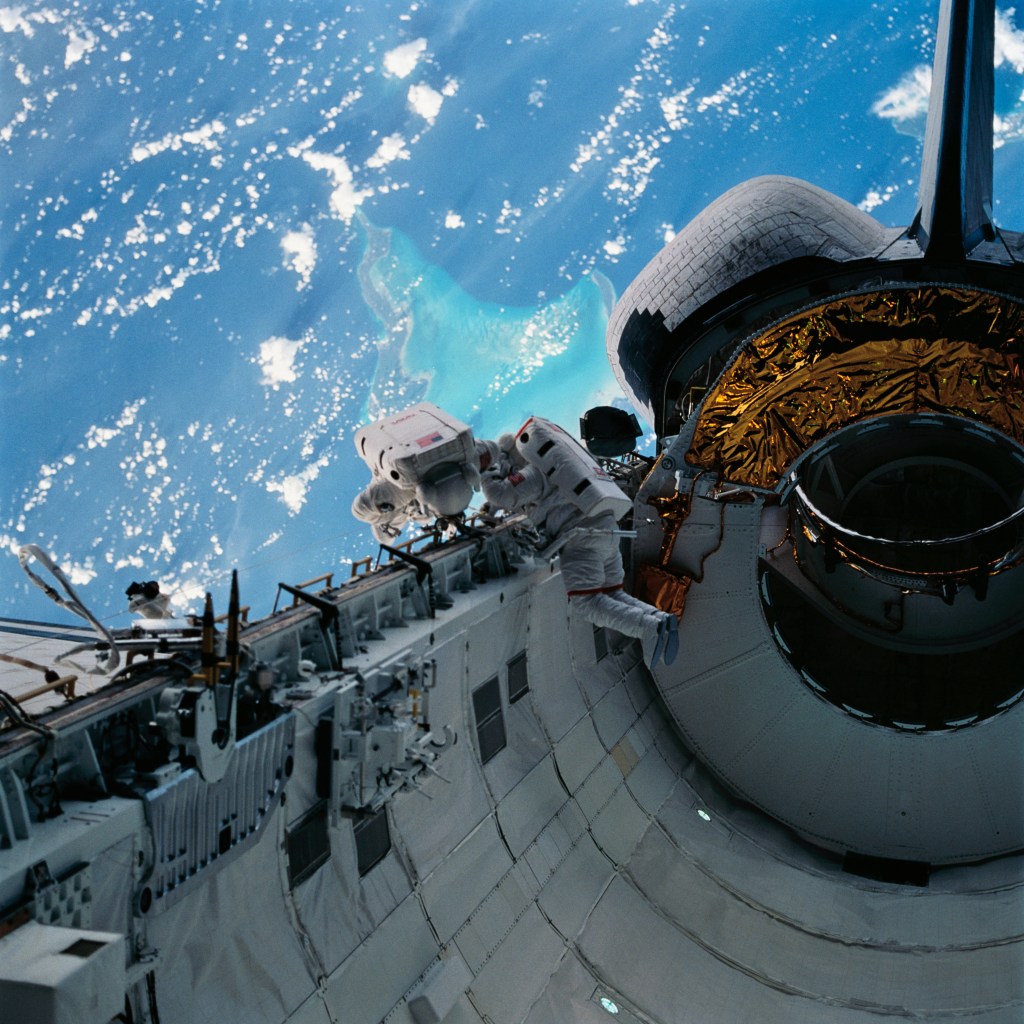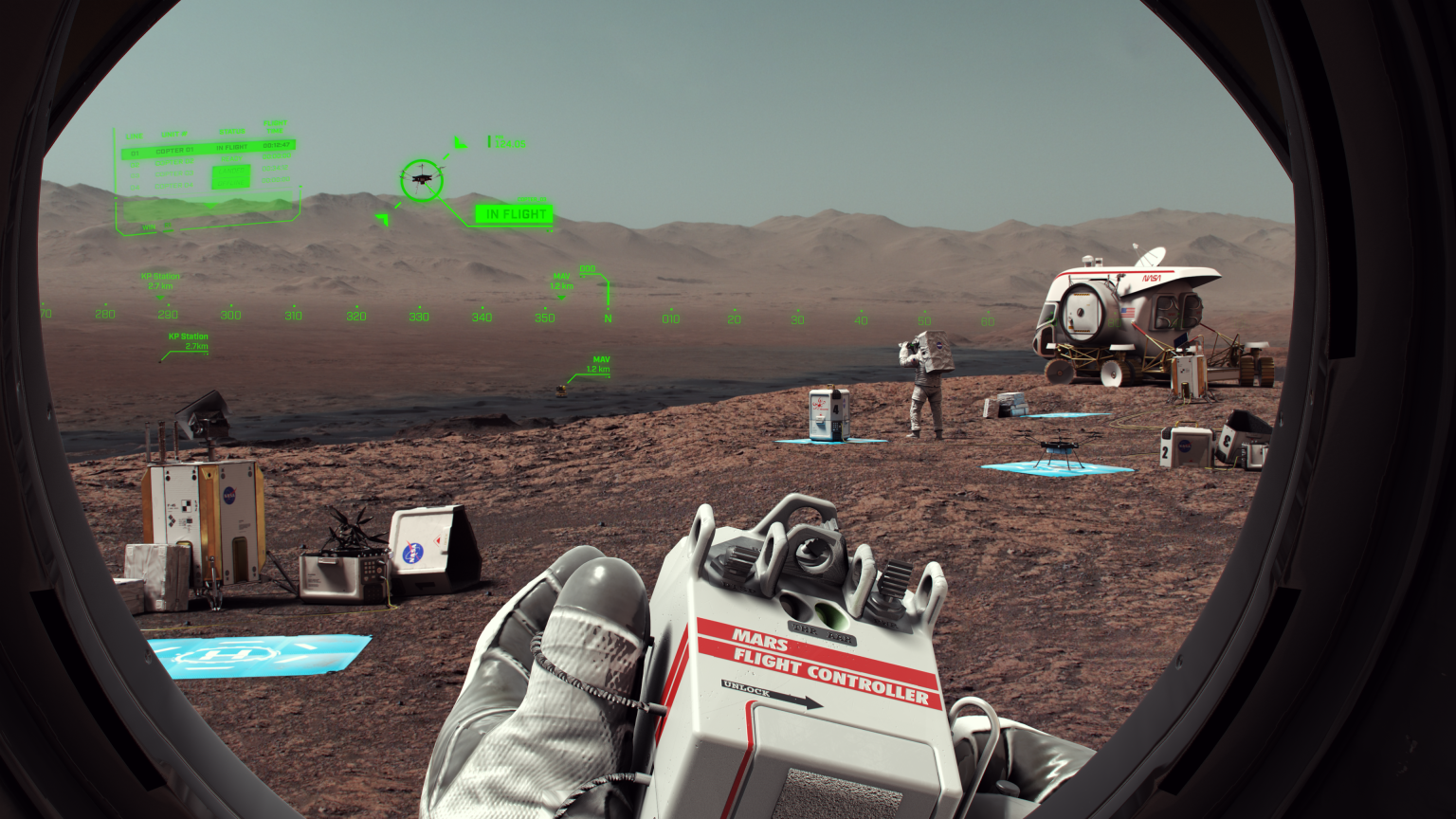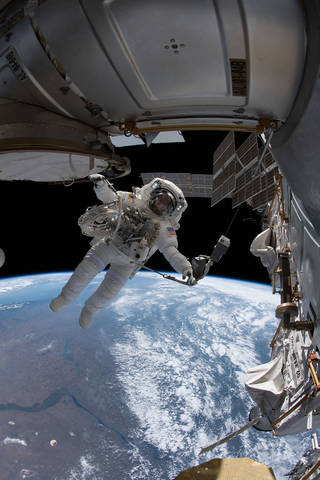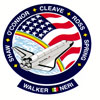
STS-61B
STS-61B was NASA's 23rd Space Shuttle mission, and its second using Space Shuttle Atlantis.
Space Shuttle
mission duration
Launch
Landing
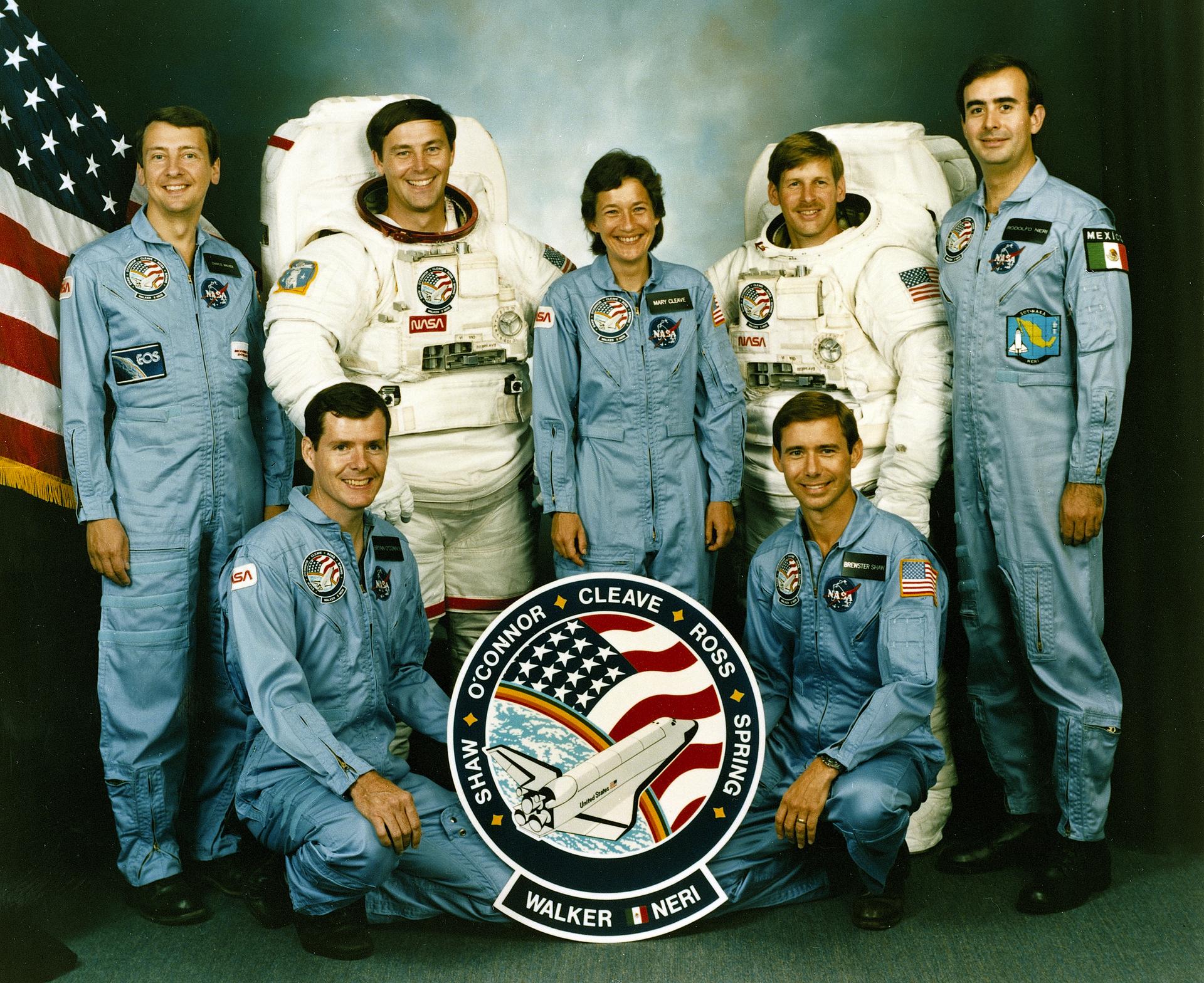
Mission Facts
Mission: MORELOS-B; AUSSAT-2; SATCOM KU-2
Space Shuttle: Atlantis
Launch Pad: 39A
Launch Weight: 261,455 pounds
Launched: November 26, 1985, 7:29:00 p.m. EST
Landing Site: Edwards Air Force Base, Calif.
Landing: December 3, 1985, 1:33:49 p.m. PST
Landing Weight: 205,732 pounds
Runway: 22
Rollout Distance: 10,759 feet
Rollout Time: 78 seconds
Revolution: 109
Mission Duration: 6 days, 21 hours, 4 minutes, 49 seconds
Returned to KSC: December 7, 1985
Orbit Altitude: 225 nautical miles
Orbit Inclination: 57 degrees
Miles Traveled: 2.8 million
Crew
Brewster H. Shaw, Jr., Commander
Bryan D. O’Connor, Pilot
Mary L. Cleave, Mission Specialist
Sherwood C. Spring, Mission Specialist
Jerry L. Ross, Mission Specialist
Rodolpho Neri Vela, Payload Specialist
Charles D. Walker, Payload Specialist
Mission Highlights
Three communications satellites were deployed: MORE LOS-B (Mexico), AUSSAT-2 (Australia) and SATCOM KU-2 (RCA Americom). MORELOS-B and AUSSAT-2 were attached to the Payload Assist Module-D motors, SATCOM KU-2 to a PAM-D2 designed for heavier payloads. Two experiments were conducted to test assembling erectable structures in space: Experimental Assembly of Structures in Extravehicular Activity (EASE) and Assembly Concept for Construction of Erectable Space Structure (ACCESS). The experiments required two space walks by Spring and Ross lasting five hours, 32 minutes, and six hours, 38 minutes, respectively. Middeck payloads: Continuous Flow Electrophoresis System (CFES); Diffusive Mixing of Organic Solutions (DMOS); Morelos Payload Specialist Experiments (MPSE) and Orbiter Experiments (OEX). In payload bay: Get Away Special and IMAX Cargo Bay Camera (ICBC).
STS-61B
Shuttle News
Retired Space Shuttle Locations
Shuttle Atlantis – Kennedy Space Center Visitor Complex Shuttle Discovery – Steven F. Udvar-Hazy Center Shuttle Endeavour – California Science…
Read the Story